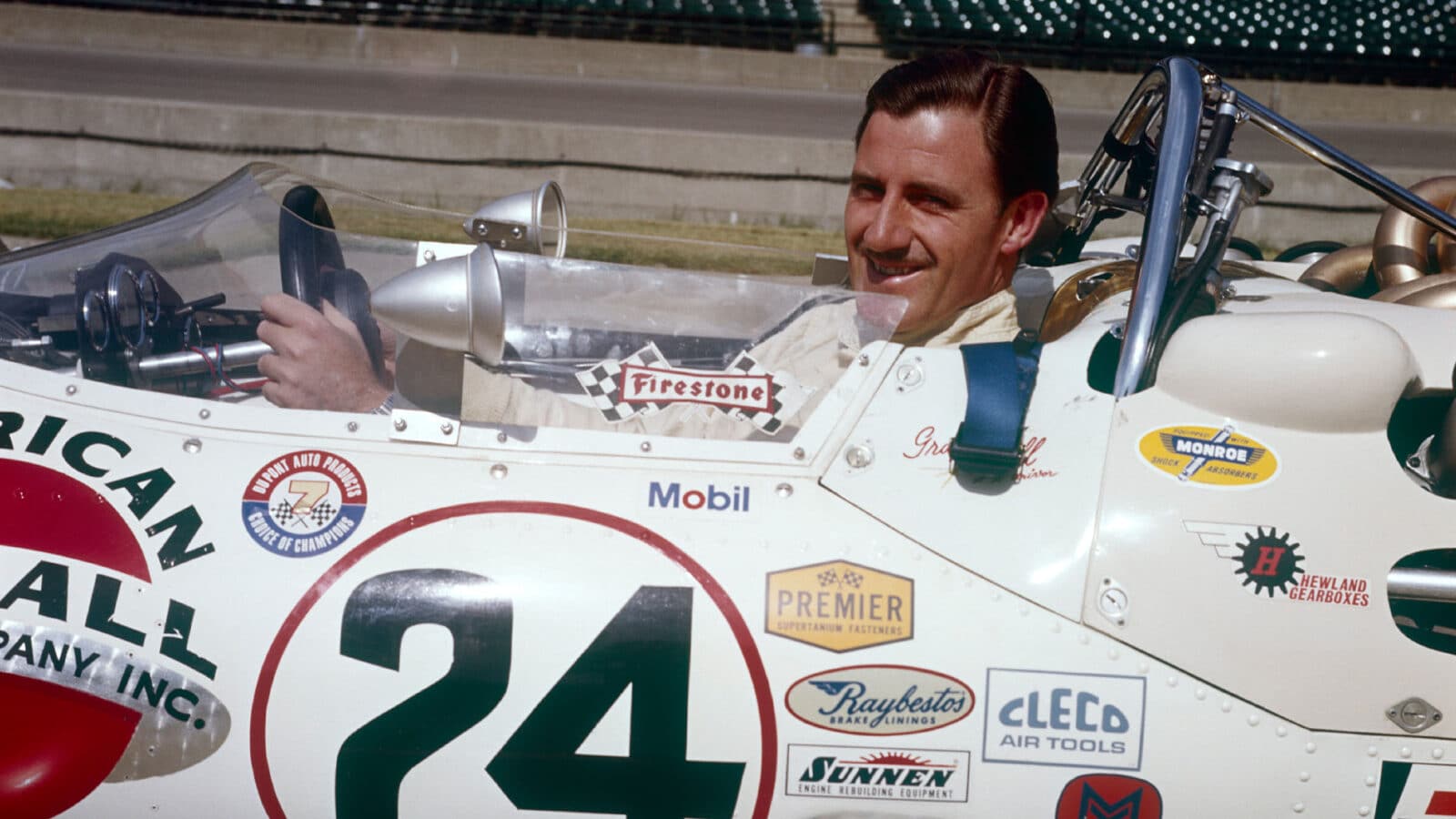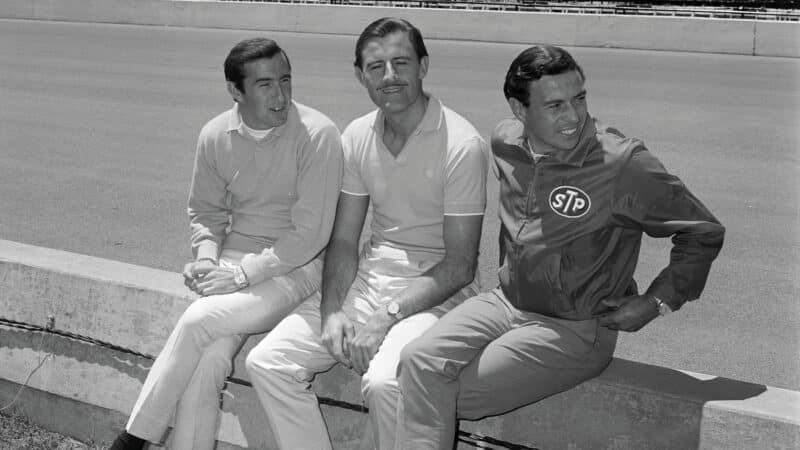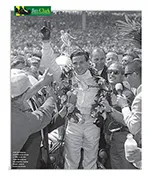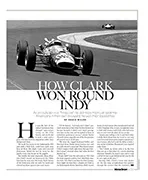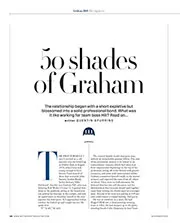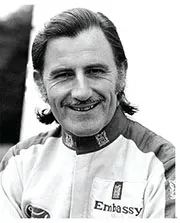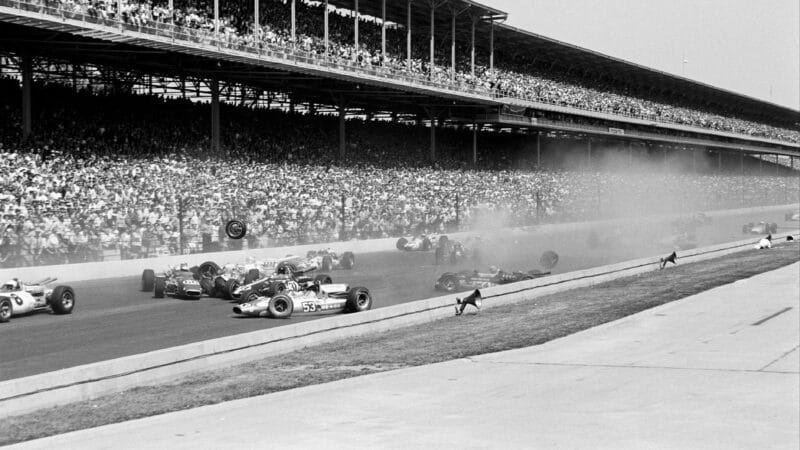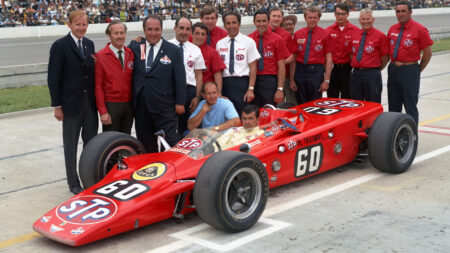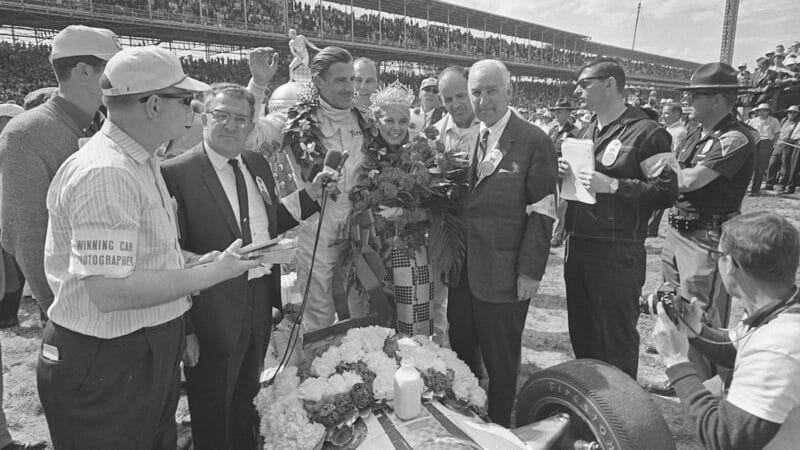Hansgen, as an employee of Team John Mecom, had been scheduled to partner two-time 500 winner Rodger Ward and the squad’s celebrity Can-Am chauffeur and Indy rookie, Stewart, at Indy. Thus Walt’s violent end led to Graham getting offered the Hansgen chair.
But Graham was reluctant. His one and only unsatisfactory taste of the Brickyard had occurred back in 1963, when he was Formula 1’s reigning world champion. But that had also been the season of Chapman and Clark. Colin had shocked Yanks with his Lotuses; Jimmy had shocked us with his driving and the ease with which he’d made blond, buxom Linda Vaughn ‘Miss Hurst Golden Shifter’ his girlfriend. Graham, by comparison, was a bit of a comedown. His dry and understated humour were misunderstood. And in ’63, he’d been assigned a half-tamed Mickey Thompson automobile he never succeeded in getting into the 500. All this had been enough to keep him away in ’64 and ’65.
What most probably helped bring him back the following season was the priceless opportunity to work for George Bignotti, Team Mecom’s brilliant and obsessed chief mechanic. Already a two-time Indy winner with A J Foyt, Bignotti was hot to conquer a third Indy and a whole lot more after that. His attempts to purchase Lotuses hadn’t gotten anywhere, so George had travelled to England looking for the next best thing in monocoques, and purchased three Eric Broadley-designed Lolas.
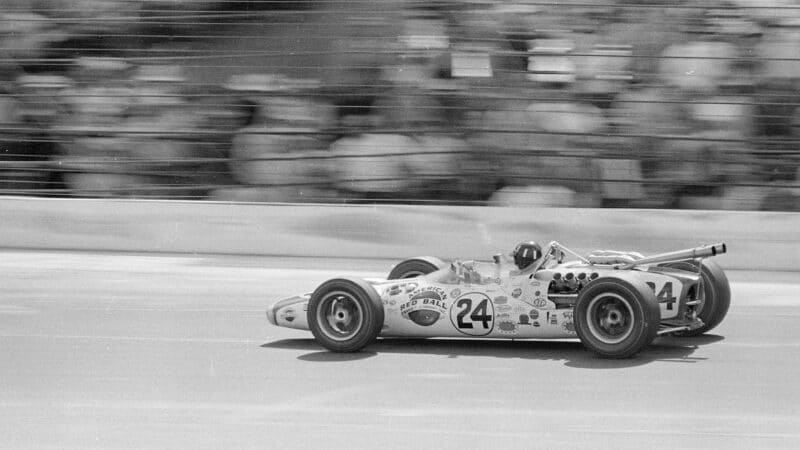
Hill qualified solidly after failing to make it into his first Indy in ’63
Getty Images
Team Mecom had a peaceful May: Stewart time-trialed for a starting place in the middle of the fourth row; Ward and Hill got the inside and outside of the fifth, respectively. Ward, ostensibly the senior driver and team leader, whined all month about how Bignotti was spending too little time on his car and too much time babysitting his pair of UK novices. But Bignotti always encouraged dissension among his drivers anyway.
The start of the 1966 500 was a textbook example for any sadist wanting to choreograph the most gargantuan wreck in Brickyard annals in five simple steps: mix a hurtling pack of 33 Lotuses, Lolas, Brabhams, Shrikes, Vollstedts, Huffakers, Gerhardts, Watsons, and Eagles, some of them supercharged, some of them turbos, some of them not; add a multi-speed close-ratio gearbox or two so that some cars can come batting through traffic up-shifting through the gears; assemble a field of chauffeurs of every racing discipline from Formula 1 to sprint-car racing; then line up at the wrong end of the grid the impatient likes of Foyt, Dan Gurney, Bobby and Al Unser, ‘Herkie’ Hurtubuise and Roger McCluskey; finally, hold back the screaming mob of 33 with a Mercury Cyclone GT pace car whose clueless pilot brings the surging pack to the starting line at school-zone speeds.
